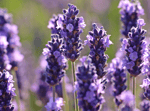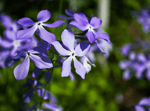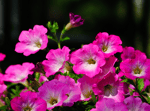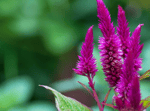
Home / Here on Earth / What You Need to Know About Landscape Enhancements?
If you’ve ever hired a landscape company, chances are you’ve been asked about “enhancements.” While this is a popular and widely used term in the landscape industry, it can be confusing for the average property owner or manager. Enhancements typically refer to any services or additions outside the scope of a traditional annual maintenance contract. While sticking to a regular maintenance and tree care routine keeps everything up to standard, enhancements are meant to personalize your property by creating a unique sense of place. To help you decide which enhancements are right for you, we’ll go over some of the most common types of landscape enhancements and show how they can turn a green space into a special place.
 Hardscaping
Hardscaping
Hardscaping is one of the two significant components of landscaping. While softscaping refers to all plant life, hardscaping refers to the non-living elements of a landscape.
Hardscapes are the best way to add uniformity, accessibility, and structure to your landscape. A bridge can connect separate parts of your property, or a pathway can give you control over how residents experience the property.
Varying in color and texture, different hardscape materials require different installation methods and a lot of prep and planning. Proper hardscape installations can require surveying, excavation, and consideration of turf and draining.
Water Features
One of the most transformative options available for enhancing your landscape is a water feature. Water features are manmade structures such as ponds, fountains, or waterfalls that incorporate the soothing yet lively nature of water.
Water features are one of the most versatile landscape enhancements. Not only do they create ambiance, but a well-installed water feature can utilize your property's natural slopes and transform challenging terrain into an alluring focal point. Water features come in all shapes and sizes, so no matter the space constraints almost any property can have its unique oasis.
Seasonal Color
The seasons offer the best way to customize your space as per the current season. Investing in this enhancement, you can witness visual changes in your area with the color and textures of different plants. Annual flowers are the best way to add seasonal color to the landscape. This involves using a rotating plant calendar to ensure that your outdoor space is a constant burst of color, changing each season.
Spring Color:

Lavender |
|
Early spring is usually cold, especially in North Florida. So, choosing annuals that can withstand cold temperatures like Lavender, Amaranthus, and Cape Daisy is essential. The earliest planting time for Amaranthus is March throughout Florida. To plant Cape Daisy, it is February in North and Central Florida, and January for South Florida, while for Lavender it is March in North and Central Florida.
Summer Color:
.png?width=150&name=Begonia%20(Wax).png)
Begonia (Wax) |

Periwinkle |
Some examples of annuals for summer color are Periwinkle, Begonia (Wax), and Moss Rose. The earliest planting time for Periwinkle is March for North Florida and May for Central Florida. The earliest planting time for Begonia (Wax) is March for North Florida and February for Central Florida. Both these annuals can be planted all year round in South Florida. Moss Rose is planted at the earliest in March throughout Florida.
Fall Color:

Petunia |

Ornamental Cabbage |
Florida’s climate allows fall annuals to survive through winter in most regions. Some examples of annual fall flowers that will also give you winter color are Ornamental Cabbage/Kale and Petunia. The earliest time for planting both is October throughout Florida.
Winter Color:

Snapdragon |

Pansy |
Annuals for winter color are Geranium, Pansy, and Snapdragon. The earliest time for planting Geranium is October throughout Florida. For Snapdragon it is October for North and November for Central Florida and South Florida. The earliest time for planting Pansy in North Florida is October, while for Central Florida, it is November.
Outdoor Lighting
-1.png?width=345&height=327&name=Screenshot%20(19)-1.png)
Conclusion
Whether you’re looking to spice up your space or start from scratch, enhancements are just one of the numerous considerations before starting a landscape project. Every enhancement requires unique maintenance which should be considered before installation.
With so many details, it can be easy for the average person or even inexperienced landscapers to make mistakes. Unfortunately, these mistakes can be disastrous when it comes to exterior design and can easily lead to property damage or even injury. If you want to get the best results, rely on a landscape professional, they have years of training and experience creating customized outdoor experiences.
If you’re considering adding enhancements to your property or having enhancements added to your yearly maintenance program, Down To Earth has the modern technology and the dedicated professionals to exceed expectations, every time.

